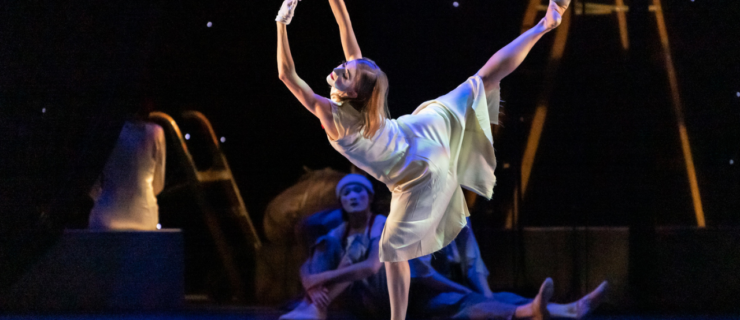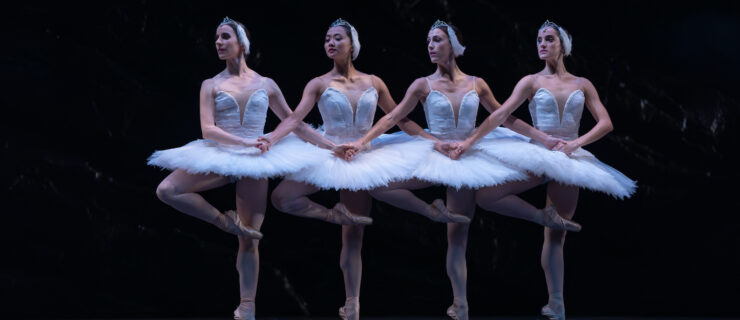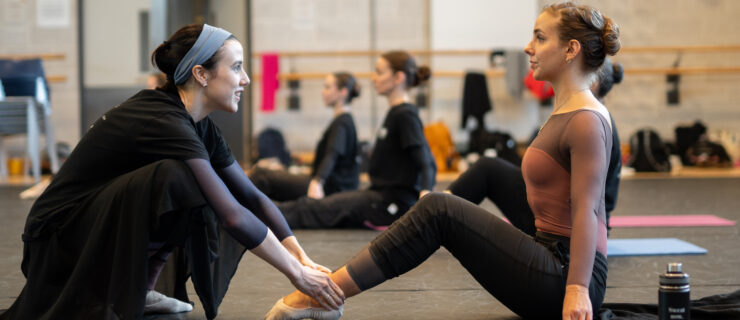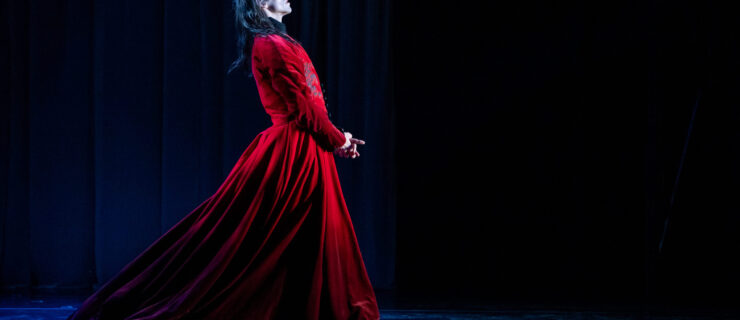The Bay Area’s SFDanceworks Builds On Its Mission
SFDanceworks could have chosen to be a miniature model of a large dance company. Instead, from its founding in 2014 by former San Francisco Ballet soloist James Sofranko, the project-based company has been less defined by the number of its dancers (13) than by the tonality of its roster and repertoire—and the giant steps taken to bring an ambitious mission into sharp focus. It speaks its name just as boldly by what it isn’t as by what it seeks to become: the best in contemporary ballet, supported by the classical archive.
After Sofranko, now artistic director of Grand Rapids Ballet, left in 2019, the company was co-directed by former Alonzo King LINES Ballet dancers Brett Conway and Laura O’Malley. (Sofranko remains as an advisory board member.) Since October 2021, former SFB soloist and choreographer Dana Genshaft has been serving as interim artistic director.
Having seen the company’s explosive return to the stage this year in July at the ODC Theater—featuring world premieres by Bay Area artists Dani Rowe, Babatunji Johnson and Laura O’Malley, as well as works by Edward Clug, Yin Yue and Martha Graham—I spoke by phone with Genshaft to learn the company’s post-COVID plans, and its prospects for the future.

SFDW has brought in outstanding dancers from SFB, Nederlands Dans Theater, LINES Ballet and companies of similar stature. What attracts them?
Having danced with San Francisco Ballet, what attracted me was that SFDW felt like going camping: leaving structures of a big machine behind, self-producing, finding joy in casualness, simplicity. It’s not a long-term project, there’s no pressure—we’re holding the works very dear and intimately. (I’ve also heard our audiences express liking access and proximity, performances in a small house.)
Choreographers today are saying there’s a shift, and many dancers don’t necessarily want to be owned, signed on to a 40-week contract. They want to be able to take work at will, or dance on a special project.
How has your role at SFDW changed over the years?
I joined the 2016 inaugural season. My performing career with San Francisco Ballet was ending, and that summer offered a chance to try work I’d always wanted to dive into. I danced there another two summers after that. The mission James [Sofranko] created challenges the dancers to acquire varying choreographic styles and modes of movement, and I admire and believe in this approach as well.
During the pandemic lull, I reached out to see what I could do. My own choreographic endeavors had slowed and I was on the SFB School faculty, a home base for my work. I offered to energize the very committed SFDW advisory board. The company had a wonderful reputation and a strong identity. I saw it as fun, interesting and challenging to fundraise and gather a repertoire. Former executive director Lindsay Clipner was a partner who was equally enthusiastic, and we became a kind of “Thelma and Louise,” hitting one milestone after the next: fundraising, contract writing, dancer auditions—all-inspiring, never-ending, every single piece realizable.
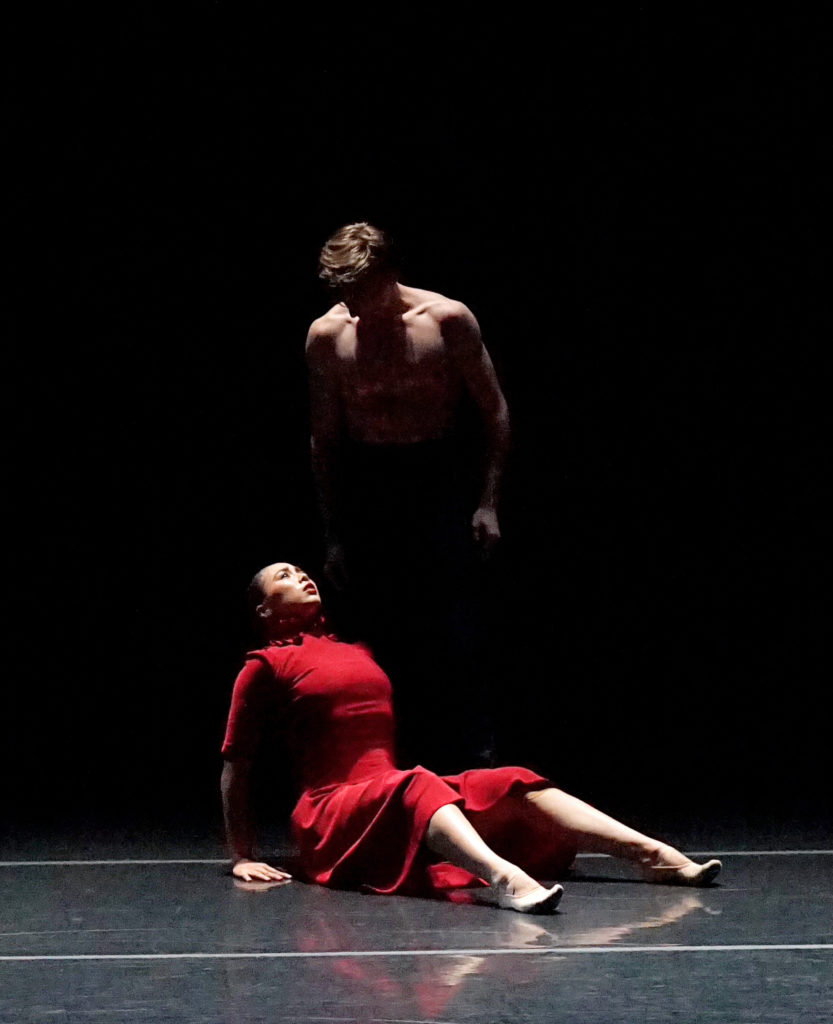
Can you talk about how the July program came together?
We wanted to build on the community of Bay Area artists, mature professionals at different stages of our careers. For example, Brett Conway came on as Dani Rowe’s stager and assisted with other works in the studio. And Laura O’Malley choreographed—her work Within Where was hugely successful and she is commissioned to do more.
[New York City–based] Yin Yue’s Just Above the Surface brought work that reached beyond energetic, with her own technique. She understood the challenges facing a tiny company. [We also brought in]Slovenian choreographer Edward Clug, who has a minimalist, architectural, yet generous style. He was inspired by the vision of developing a world-class contemporary company in the Bay Area.
We wanted to fold all of these dancemakers in with the original mission to present past and future contemporary dance, as well as historic classics from the modern dance idiom, with room for more Martha Graham and Merce Cunningham onstage. And offer classes [for the dancers] to gain added foundation and experience, to enrich us with signature historical works.
You speak of a shared aesthetic with previous artistic leadership. What does it consist of?
The aesthetic is a blend of modern dance with balletic ideas, with choreographers who exemplify a style. Examples would be Lar Lubovitch, Jiří Kylián and Nacho Duato. Babatunji Johnson’s longtime experience with LINES Ballet must have influenced his identity as a creator, and it feels vital for us to find ways of supporting this generation of Bay Area artists in their choreographic ambitions. And other forms contribute to the evolution of contemporary dance; Yin Yue, for example, is influenced by traditional Chinese folk dance. It is the mix of influences that make SFDW repertoire interesting: the historical perspective, the commitment to local and international artists, presenting master works but also giving space for emerging voices. All of this together makes it a very exciting project.
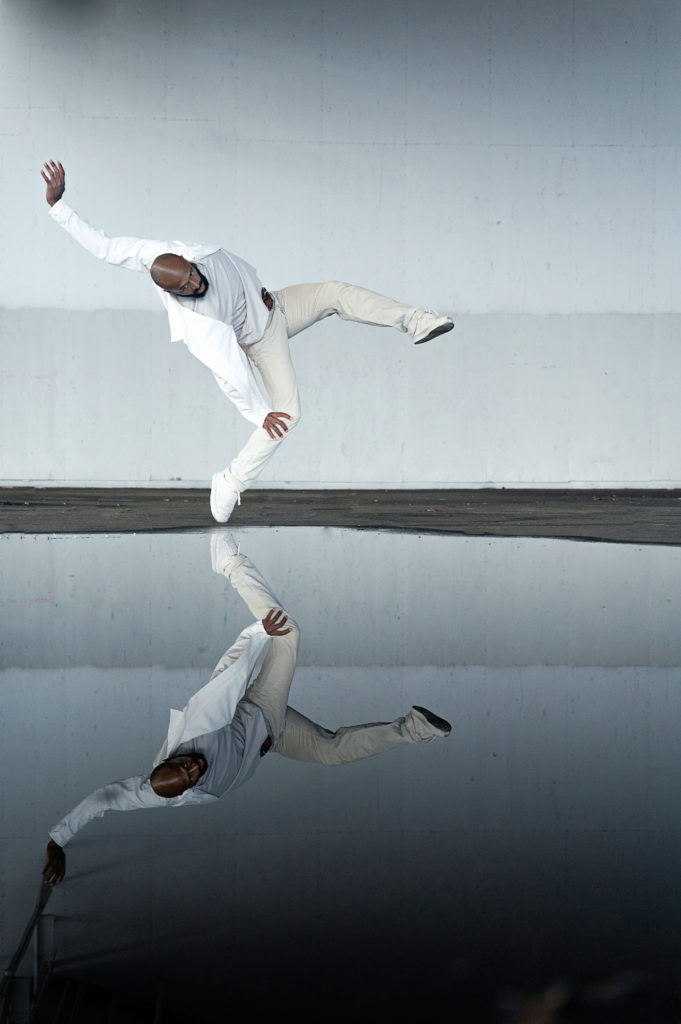
How is the company growing in terms of building an endowment, acquiring works, touring and company identity?
What we have done has doubled our nest egg. We came out [of the pandemic] with more than what we started, and doubled what we raised before. We would love to have board members who could work on an endowment.
We are local artists, covering a lot, with supporters gaining confidence in our consistency to handpick and curate interesting, high-caliber work, with a through line in leadership and artistic experience. We want to grow from one to two programs a season, hire an administrator to help us outgrow our “pickup company” status, and create more programming with classes and workshops to identify new choreographers. It would be gratifying to fulfill this ask in two to five years, see it grow roots, anchor itself and be stable.
What can we look forward to from SFDW?
We are in early conversations for our ODC summer 2023 season. Goals include traveling to places like the Vail Dance Festival, Kaatsbaan, BalletSun Valley and DanceAspen—jumping on a bus and doing residencies that develop us, and where costs don’t run as high as in the Bay Area.


